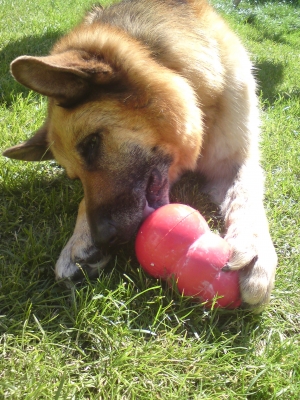Teaching what you don't want, by teaching what you want!

Often when we think about undertaking some formal training with our pets we usually have a list of things we would like them to stop doing.
These can be:
1. stop Rover from pulling on the leash
2. barking at other dogs
3. chewing up the furniture …
When we then think about how to change these behaviours it often seems natural to think of some way to stop the dog from doing them by using some form of punishment. Although we know that punishment does works to stop certain behaviour if applied properly this is not very easy to do and has side effects. So what if we thought about training our dogs in a slightly different way:
One question we often forget to ask when we think about training our dog is “what would we like him to do?” So instead of the responses mentioned above we would think how would like Rover to:
1. walk on a loose leash
2. sit and look at me as another dog walks by
3. chew on these certain toys
It seems much easier and faster for me to teach my dog to chew on 5 specific toys than to go around my whole house teaching him hundreds of items I don’t want him to chew.
Also with this approach we are teaching what we would like them to do instead of the undesired thing. By doing this we are not leaving them to guess and get it wrong again. Think about a child who is scribbling on the wall. If we just use punishment the child may stop scribbling on the wall and try something else, this may be just as as undesirable or not what we want the child to do. However if we were to redirect the childs behaviour to a colouring book containing their favourite characters and praising them for using it (with something they actually find rewarding) then they are more likely to use the colouring book, which is great because the time the chid is using her book she is not using the wall, floor, fridge...
So if you have a few minutes write a list of three things you would like to change with your behaviour then next to them write what you would like him to do instead then come up with a plan to teach this. If the new thing you would like him to do is more rewarding than the thing you don’t want him to do, what do you think he is going to choose?
(Picture: Kane learns that chewing his toy which has been stuffed with his dinner and added sardines is much more fun and rewarding than chewing on my furniture.)




